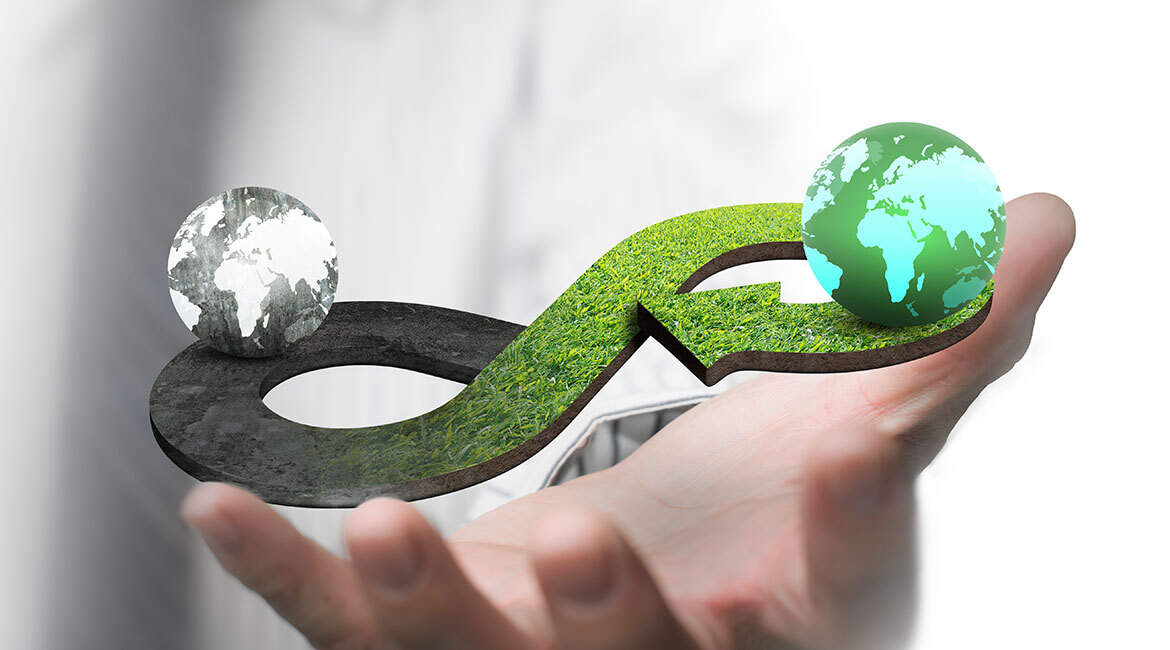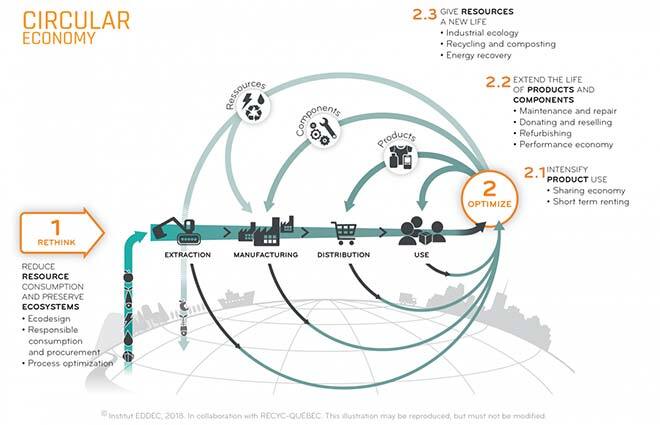Demystifying the Circular Economy

Purchased on Istock.com. Copyright.
Limitations of the Linear Economy
Economy is often at odds with the environment. Sadly, for the linear economy—the economic model in place since the beginning of the industrial era—this is true. Indeed, in this type of economy, resources are extracted to manufacture products that are consumed and then end up as waste at the end of their life cycle.
It is estimated that more than 90% of extracted resources end up in landfills or as pollution, or sit unproductively in the marketplace (e.g. product stocks that are not being used). To meet the ever-increasing demand for products and services, phenomenal amounts of resources must be extracted. By 2020, over than 100 billion tonnes of material will have been extracted annually, of which barely 9% are recirculated in the market.
Different Strategies of the Circular Economy
Several strategies can be implemented to further circularize our business model. These strategies are designed essentially to reduce the amount of resources extracted to meet our needs and optimize the use of goods and services we consume.

Québec circulaire presents 12 strategies to get closer to a circular economy.
Some strategies are designed to intensify the use of certain goods, for example, through a sharing economy or short-term rentals. Others seek to extend the life of goods by ensuring their repairability or refurbishing. Among these is the performance economy, which consists of selling the use of a product rather than the product itself, with the manufacturer remaining the owner of the property, allowing recovery of reusable or reconditionable components when the product is returned. Finally, some strategies are aimed at by-product recovery, such as industrial ecology. Like nature—where everything is used, and the notion of waste does not exist—industrial ecology consists in pairing businesses producing waste that could become raw material for others.
Engineers at the Heart of the Circular Economy
Because of the role they play, engineers are able to intervene in each of the circularity strategies. They can create platforms, connecting people with goods to offer with those who need them. They can also implement technologies to increase the productivity of resources. Consider aircraft recycling, an impossible process at the moment because of the technological limitations of separating alloys into pure metals. Or the principle of reverse logistics, which consists of reversing supply chains so that reusable components can be returned by the consumer to the manufacturer.
In the ÉTS ecosystem, CERIEC intends to push back certain technological boundaries of the circular economy to bring us closer to sustainable development.


